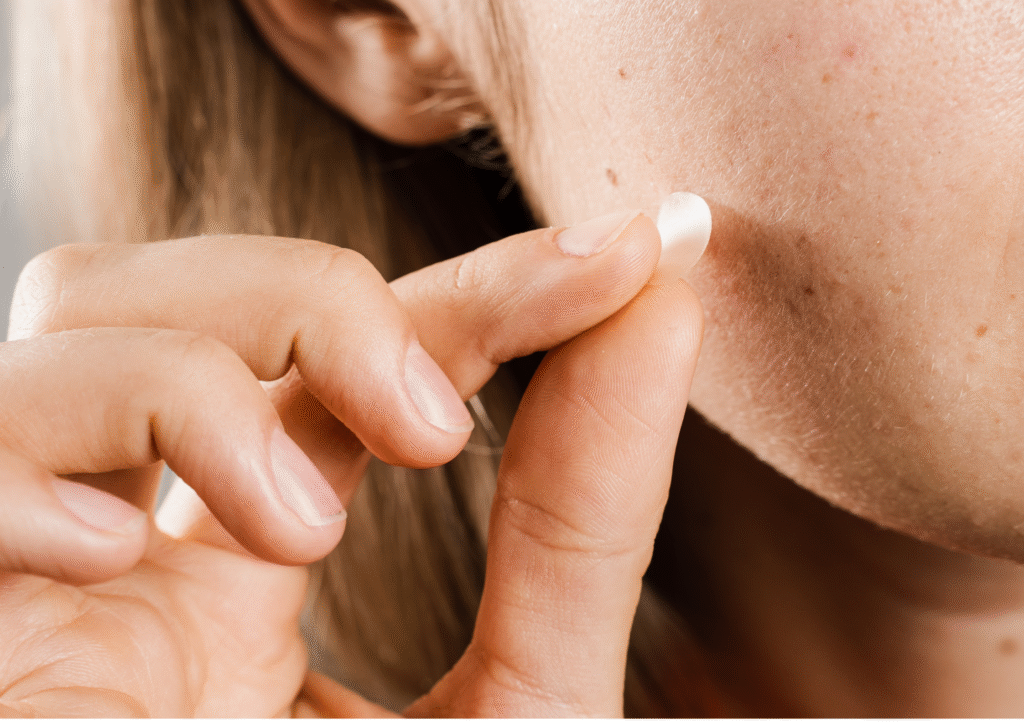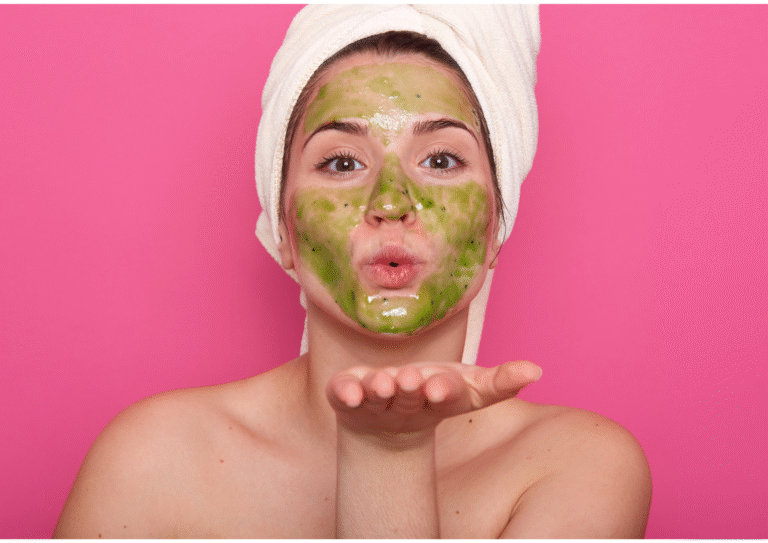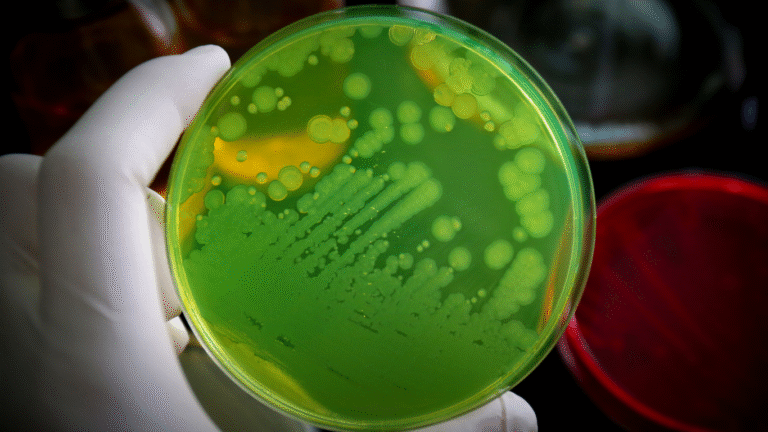
Learn why common homemade skincare can harm your skin’s delicate microbiome, causing irritation, infections, or lasting damage.
What if your deepest wish is glowing, healthy skin, but every DIY mask or kitchen cure you try leaves it red, itchy, or worse? You’re striving for natural beauty, but the results are anything but. If you keep reading, you’ll learn precisely why microbiologists advise caution with at-home skincare trends and how you can actually protect your skin’s vital microbiome instead.
Why understanding What Microbiologists Think About DIY Skincare Trends matters more than you might think. Because your skin’s natural microbes form a fragile, protective ecosystem. DIY trends, especially those using harsh or improperly formulated ingredients, can severely disrupt this delicate balance, potentially causing significant irritation, increasing your risk of infection, or leading to long-term skin issues.
However, it’s incredibly easy to get swept up in a viral recipe online. You might see “natural” ingredients like lemon juice here or garlic paste there, believing that “natural equals safe.” On the other hand, microbiologists and dermatologists consistently stress that using untested ingredients and practicing poor hygiene during preparation can seriously damage your skin barrier, invite opportunistic infections, or even leave lasting, visible damage to your complexion.
What Microbes Live on Your Skin . . . and Why They Matter
Your skin is not just a surface. It hosts a vibrant, complex community of microorganisms, including diverse bacteria, fungi, and even tiny mites. This collective, known as your skin microbiome, works in harmony to protect you. These microbes act as a first line of defense against harmful pathogens, help maintain your skin’s crucial pH balance, and even play a role in soothing inflammation. [1, 2]
However, disrupting this delicate ecosystem—whether by over-washing with harsh cleansers or by applying improperly formulated DIY mixtures—can lead to a state called dysbiosis. This imbalance can significantly increase skin irritation, make you more susceptible to infections, and exacerbate conditions like eczema and acne. [3] Understanding this balance is the first step toward true skin health.
Why DIY Isn’t Always Better: Hidden Risks
While the idea of natural, homemade skincare is appealing, microbiologists warn of significant hidden risks.
1. Irritation and Chemical Damage
Common kitchen staples might sound harmless, but many can severely irritate or even chemically damage delicate skin.
- Lemon juice is highly acidic, with a pH typically between 2 and 3. Applying it directly to your skin can cause chemical burns, leading to redness, blistering, or increased sensitivity to the sun, a condition known as phytophotodermatitis. [4, 5]
- Baking soda is strongly alkaline, with a pH of around 8-9. Applying it disrupts your skin’s natural acidic pH (which is typically around 4.5-5.5) and severely weakens its crucial natural barrier. [4, 5] As Dr. Fayne Frey, a dermatologist, states, “Baking soda disrupts the skin’s acid mantle . , . leading to irritation and inflammation.” [5]
As a result, these popular kitchen DIYs, instead of soothing, can cause significant redness, excessive dryness, or worse—lasting sun damage and post-inflammatory scarring.
2. Risk of Infection from Contamination
Microbiologists consistently highlight the very real risk of microbial contamination in homemade skincare products. This risk is often underestimated.
Unpreserved DIY formulas, lacking the necessary antimicrobial agents found in commercial products, can rapidly grow harmful bacteria, mold, or yeast within hours or days. [6, 7] Applying these unsterile mixtures to your face can introduce pathogens directly to compromised skin, leading to unpleasant rashes, severe infections, or worsening existing conditions. [7] However, in stark contrast, commercially manufactured skincare products adhere to strict safety guidelines and undergo rigorous testing. They incorporate carefully selected preservatives to minimize microbial contamination and ensure product stability. [8]
3. Lack of Precise Formulation
Professional, microbiome-friendly creams and serums are developed with precise pH levels and active ingredient concentrations. DIY mixtures, by their nature, completely lack this critical control.
Without precise scientific formulation, the efficacy of homemade remedies is largely hit-or-miss, and their safety is entirely untested. [6, 9] Furthermore, inadvertently overdosing on even seemingly benign acids or oils can severely damage your skin barrier, clog pores, or trigger significant irritation and breakouts. [5, 9] As a result, when you attempt DIY formulations, you may inadvertently do more harm than good to your skin—often without immediately realizing the extent of the damage.
How Microbiologists Say We Should Protect Our Skin
Instead of risky DIYs, microbiologists and dermatologists advocate for approaches that nurture your skin’s natural defenses.
1. Embrace Skinimalism
Experts increasingly suggest that a simple, validated skincare routine—consisting of just a gentle cleanser, a good moisturizer, and broad-spectrum sunscreen—works best for most skin types. [10, 11]
This minimal, gentle approach actively protects your skin’s delicate microbiome and preserves its essential barrier function. Overloading your skin with numerous products, especially untested homemade concoctions, risks disrupting this vital balance far more than a curated, simple routine. However, by consistently using just a few safe, proven ingredients daily, you actively support your skin’s complex ecosystem.
2. Opt for Microbiome-Friendly Products
The “clean beauty” movement is evolving to include advanced formulas specifically designed to support—not eradicate—your skin’s beneficial microbes.
Exciting innovations like microbiome-activating molecules, prebiotics (food for good bacteria), and postbiotics (beneficial byproducts of bacterial activity) are emerging and undergoing rigorous clinical testing. [12] Studies are also confirming that how products influence the skin microbiome can be highly individual-specific. This reinforces the understanding that “one size fits none” in skincare, underscoring the need for personalized approaches. [2] As a result, science-based, thoughtfully formulated products may one day largely replace the need for risky at-home recipes.
3. Patch Test Everything
Even ingredients considered “natural” can trigger unexpected allergies or adverse skin reactions in some individuals. Always proceed with caution.
Experts consistently urge performing a patch test before applying any new product—commercial or homemade—to your entire face. Apply a small amount to an inconspicuous area, like behind your ear or on your inner forearm, and observe for 24-48 hours for any signs of irritation. [13] Also, be acutely alert to contamination risks with any DIY mixtures. Store them in sterile jars, use clean applicators, and discard them after only 24-48 hours, as they lack preservatives. On the other hand, commercially produced items offer stability and safety guarantees you simply cannot achieve with homemade concoctions.
Dark Humor Moment
I once made a garlic face mask, convinced it was a miracle cure. I ended up smelling like a pizza at the office for three days straight—not exactly the glowing, Instagram-worthy outcome I’d envisioned.
Why This Matters to You
While home remedies might seem harmless, cost-effective, or even fun to experiment with, they often ignore fundamental microbiology and dermatology principles:
- They can damage your skin barrier and disrupt its natural pH, leading to dryness, irritation, and vulnerability.
- They may invite infections from rapidly growing bacteria, mold, or yeast due to a lack of proper preservation.
- They lack precise formulation and rigorous safety testing, making their efficacy unpredictable and their safety questionable.
This explainer on What Microbiologists Think About DIY Skincare Trends shows why protecting your skin’s delicate microbiome with science-backed approaches beats well-intentioned, but ultimately risky, homemade hacks.
Smart DIY Precautions (If You Insist)
If you still choose to experiment with DIY skincare, follow these smart precautions to minimize risks:
- Skip Harsh Acids and Alkalines: Never use highly acidic ingredients like lemon juice or vinegar, or highly alkaline ones like baking soda, directly on your skin.
- Preserve or Discard Quickly: Only make very small batches of DIY mixtures. Store them in sterile containers and discard them after 24-48 hours. Assume they will spoil rapidly.
- Stick to Tested, Gentle Ingredients: Opt for ingredients widely recognized as safe for skin, such as non-comedogenic oils (like jojoba or argan), plain oatmeal masks, or unflavored yogurt.
- Always Patch Test: Before applying any new creation to your entire face, perform a thorough patch test as described above.
- Stop Immediately If Skin Reacts: If your skin shows any signs of redness, itching, burning, or irritation, stop using the product immediately and rinse your skin thoroughly. Consult a dermatologist if symptoms persist.
Conclusion & Your Next Step
DIY skincare can feel empowering, offering a sense of control over what you put on your body. However, your skin’s intricate microbiome is incredibly delicate and powerful. Microbiology experts and dermatologists consistently caution that common kitchen ingredients are simply not safe or effective substitutes for professionally tested skincare.
Your Next Step: Consider replacing just one risky DIY hack you currently use with a gentle, microbiome-friendly store-bought product. Commit to using it consistently for two weeks. Notice how your skin responds—does it feel calmer, more balanced, or clearer? If so, you’ve found a healthier, more sustainable path to achieving truly glowing skin. Because real skin health is about harmony and nurturing your skin’s own protective capabilities—not about home concoctions without evidence.
Sources
- Journal of Clinical and Aesthetic Dermatology. “The Skin Microbiome and Its Implications for Skincare.” Published June 2020. https://jcadonline.com/skin-microbiome-skincare/
- Nature Reviews Microbiology. “The skin microbiome in acne vulgaris: lessons from next-generation sequencing.” Published February 2017. https://www.nature.com/articles/nrmicro.2016.155
- Experimental Dermatology. “The skin microbiome in atopic dermatitis: A new therapeutic target.” Published July 2019. https://onlinelibrary.wiley.com/doi/abs/10.1111/exd.13962
- American Academy of Dermatology Association (AAD). “Lemon juice for acne: Does it work?” Accessed July 17, 2025. https://www.aad.org/public/diseases/acne/causes/lemon-juice-acne
- Dermatology Times. “Are Popular DIY Skin Care Ingredients Safe?” (Featuring insights from dermatologists on lemon, baking soda, etc.). Published January 21, 2020. https://www.dermatologytimes.com/view/are-popular-diy-skin-care-ingredients-safe
- Cosmetics & Toiletries. “Challenges of Preserving ‘Natural’ Cosmetic Products.” Published July 10, 2019. https://www.cosmeticsandtoiletries.com/formulating/preservatives/article/21835770/challenges-of-preserving-natural-cosmetic-products
- U.S. Food and Drug Administration (FDA). “Is It a Cosmetic, a Drug, or Both? (Or Is It Soap?).” Accessed July 17, 2025. https://www.fda.gov/cosmetics/cosmetics-laws-regulations/it-cosmetic-drug-or-both-or-it-soap
- Personal Care Products Council (PCPC). “Product Safety.” Accessed July 17, 2025. https://www.personalcarecouncil.org/product-safety/
- The Society of Cosmetic Chemists (SCC). “Basic Principles of Cosmetic Formulation.” Educational resources often emphasize the need for precision.
- British Association of Dermatologists. “Skinimalism: The AAD’s New Approach to Skincare.” Accessed July 17, 2025. https://www.bad.org.uk/for-the-public/skin-conditions/skinimalism/
- American Academy of Dermatology Association (AAD). “Basic Skin Care.” Accessed July 17, 2025. https://www.aad.org/public/everyday-care/skin-care-basics
- Frontiers in Microbiology. “Skin Microbiome-Friendly Cosmetics: An Emerging Trend in the Cosmetics Industry.” Published December 10, 2021. https://www.frontiersin.org/articles/10.3389/fmicb.2021.782049/full
- American Academy of Dermatology Association (AAD). “Contact Dermatitis: Diagnosis and treatment.” Accessed July 17, 2025. https://www.aad.org/public/diseases/eczema/types/contact-dermatitis/diagnosis-treatment








